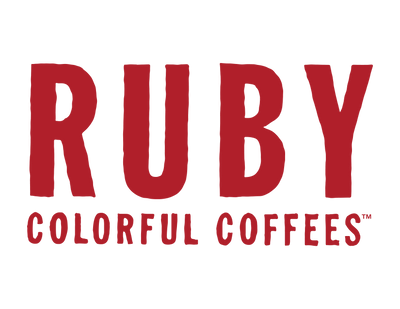Hey there, fellow coffee lovers. I’m excited about June’s spectacular coffee lineup here at Ruby, starting right here with our subscription releases. For our Bright & Lively feature, we have a lovely washed Ethiopia lot from Guji, Bishan Dimo. For our Rich & Sweet selection, we are roasting another awesome Mexican coffee, a lot from Veracruz’s Mafafas community.
I’m the first to admit how easy it is to take these special coffees for granted. After all, we just need to roll out of bed, head to the kitchen, and there it is, ready and waiting for us to brew it. Have you ever thought about just how far these coffees have come?
Tracing the journey of a single coffee, like the Bishan Dimo, reveals a complex path. Perhaps yesterday you brewed this coffee. A week prior it was being roasted in Nelsonville, bagged up, carefully sealed and placed in a padded envelope for its trip through the postal system. Before reaching our roastery, it traveled from New Jersey, where the heavy jute bags were stacked on a pallet and loaded on a truck for a multi-day journey across the eastern U.S.
The Port of New York served as its point of entry, navigating customs, tariffs, and ultimately storage at a New Jersey warehouse. This week-long, sometimes two, process is the culmination of a much longer journey by sea. The coffee in your cup came across the Atlantic, around the Southern tip of Africa, and traversed the Eastern coast from Djibouti. And it didn’t start there! Its journey began in Ethiopia after all.
Before arriving at the Djibouti port, this lot spent some time at the dry mill in Addis Ababa being prepared for shipment. 350 km south, in the Guji Zone's Odo Shakisso district, lies the Bishan Dimo wet mill. This washing station collects coffee cherries from 1,000 local producers, each of whom tend a small number of coffee trees. From these backyard gardens in Ethiopia, to your cup, this coffee has come a long way.
Imagine a similar narrative for Mexico Mafafas, although these beans took a very different route. Arriving finally at a warehouse in Houston after crossing the Texas border, this lot came by truck from its origin in the coastal state of Veracruz. The coffee plantations here are bigger than those of Ethiopian smallholders, but the wet mill in Coatepec collects cherries in a similar fashion. Though shorter in distance, the essence remains the same: numerous individuals and venues, even across continents, contributed to your morning’s special brew.
Cheers to your coffee journey,
Katy
